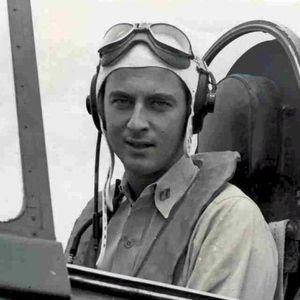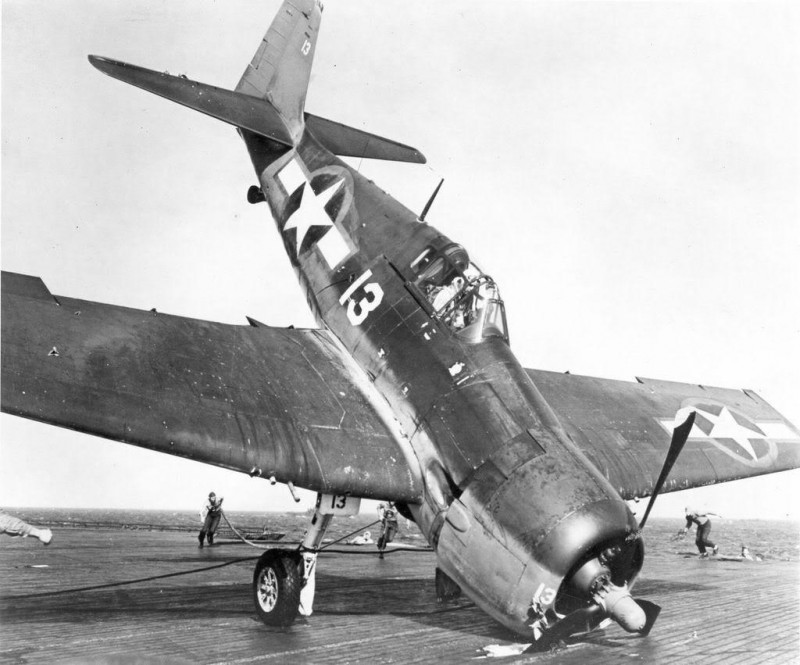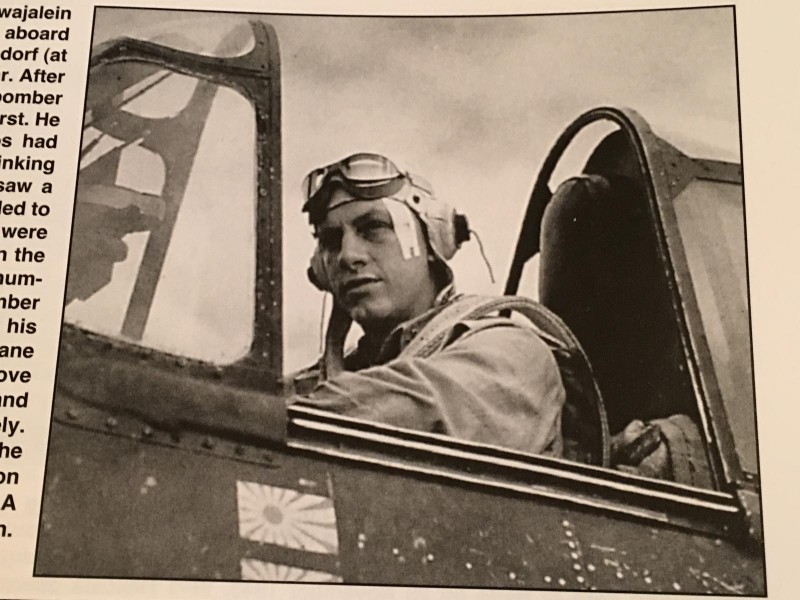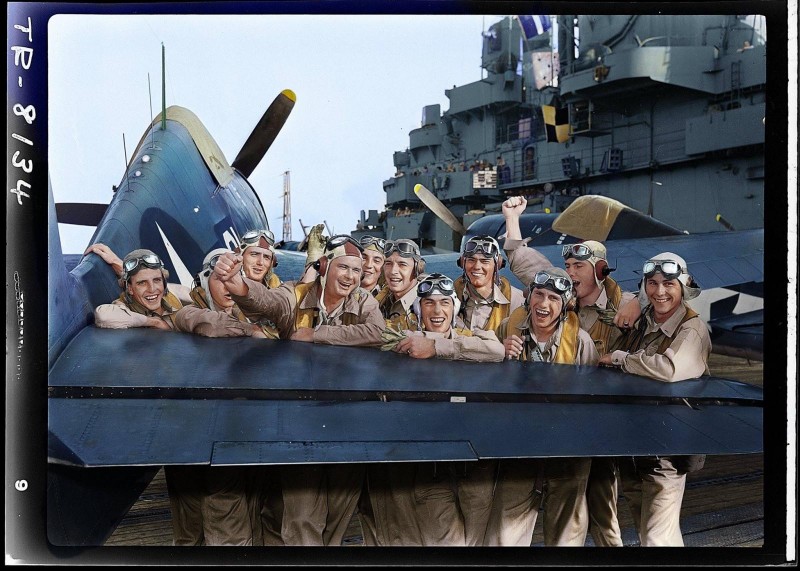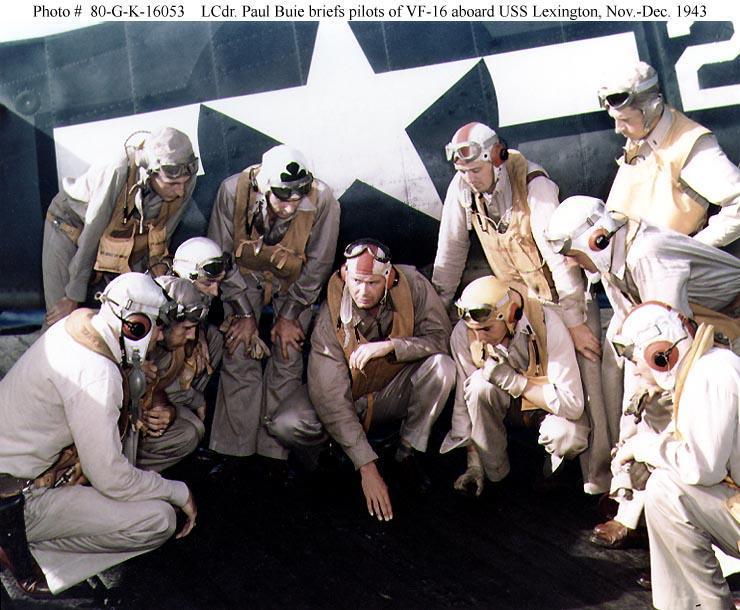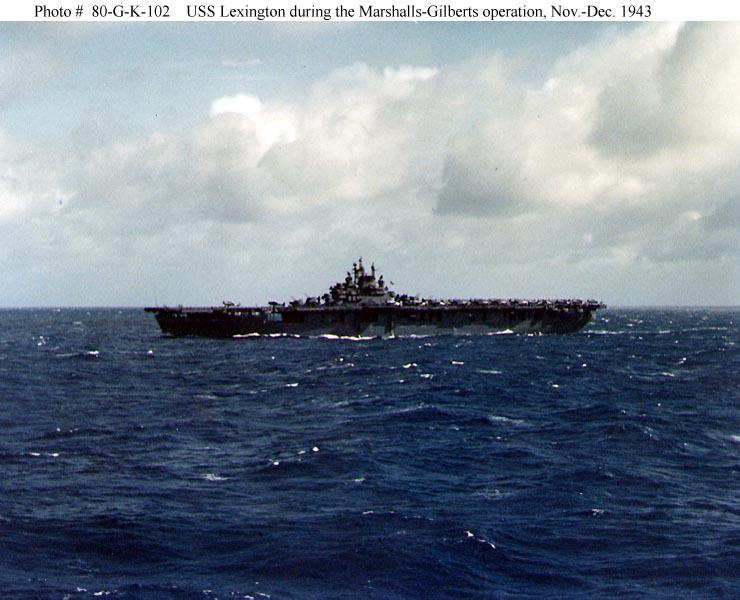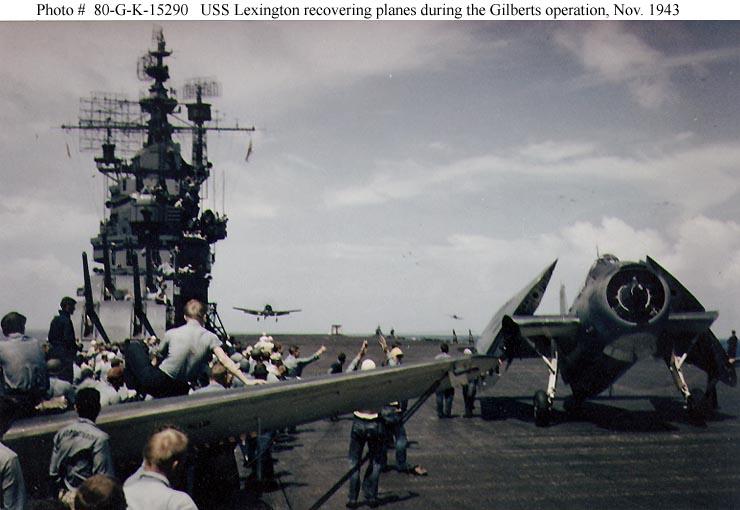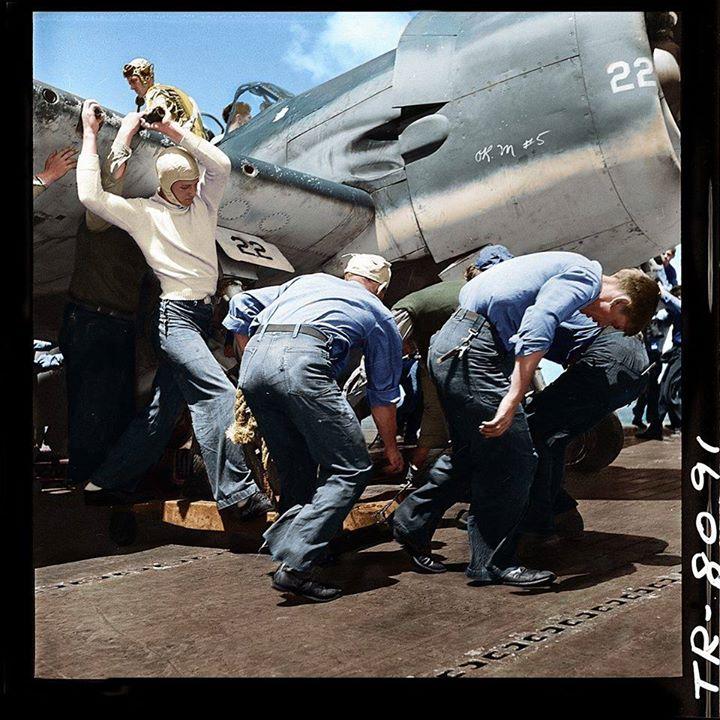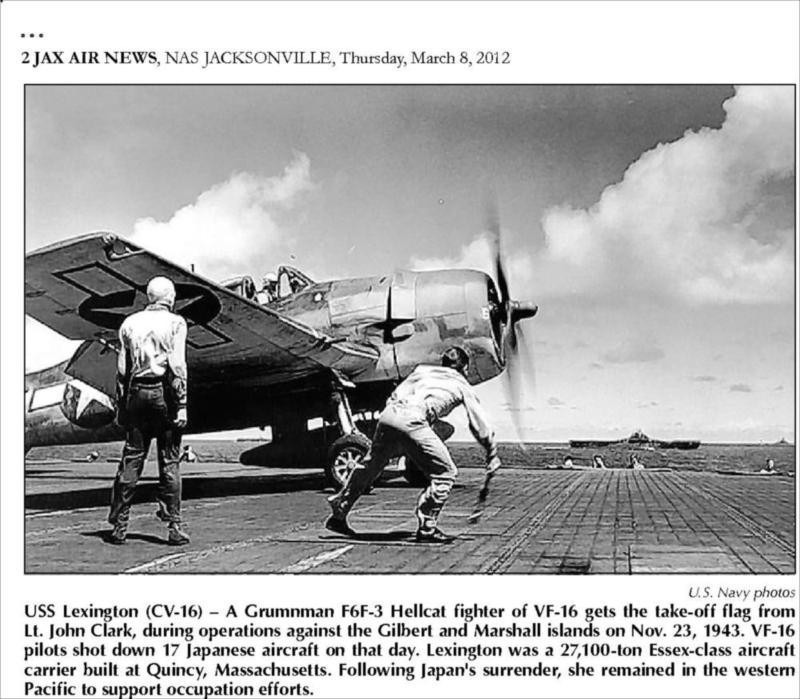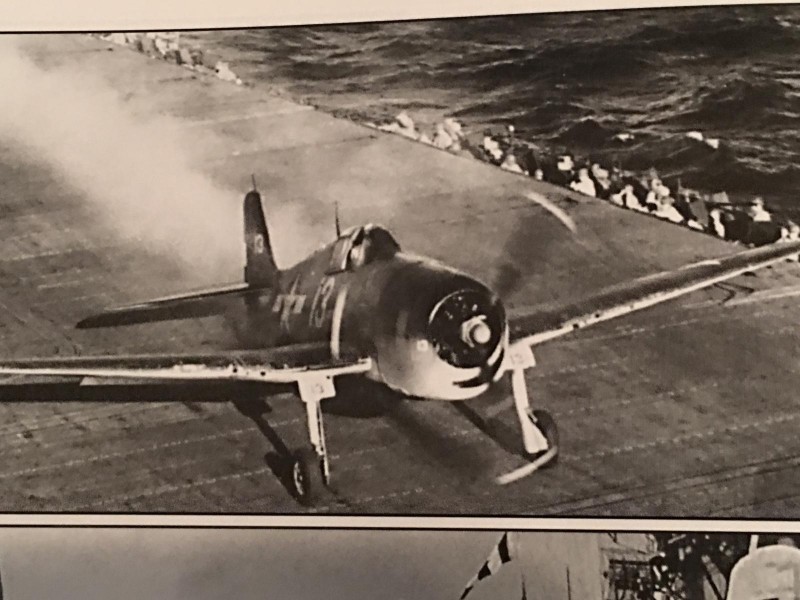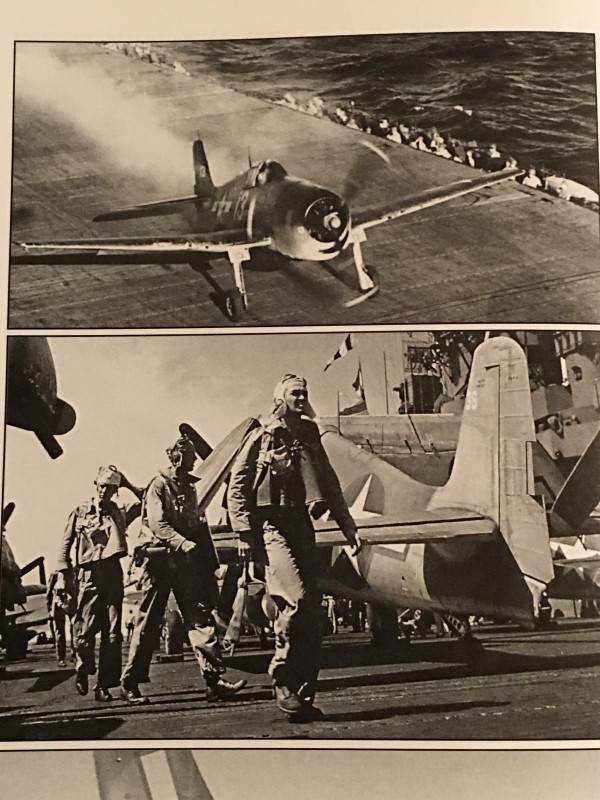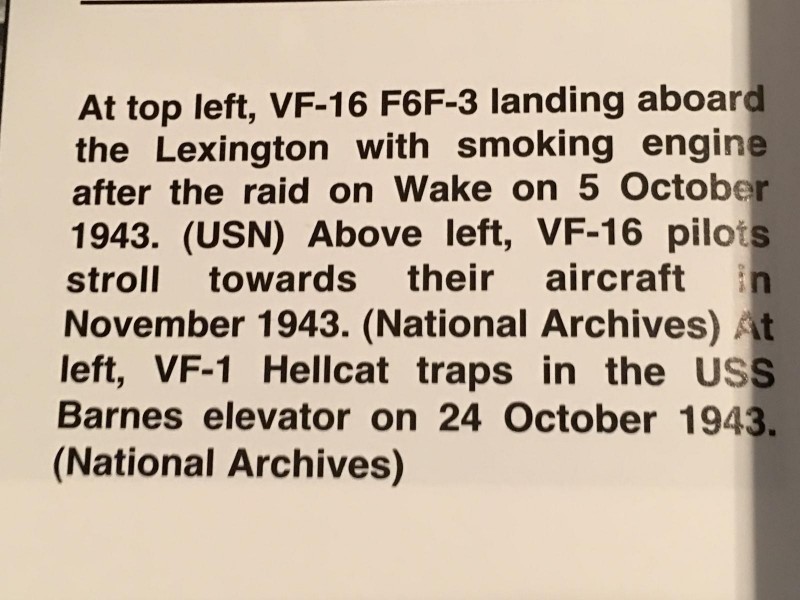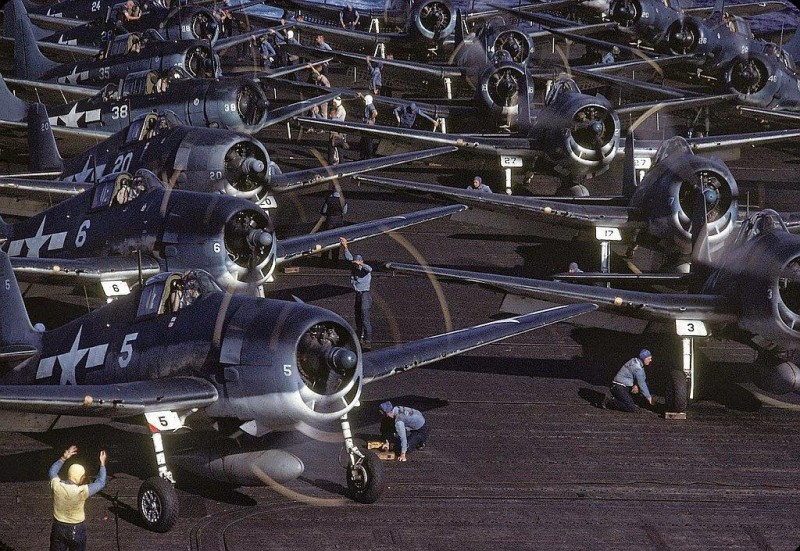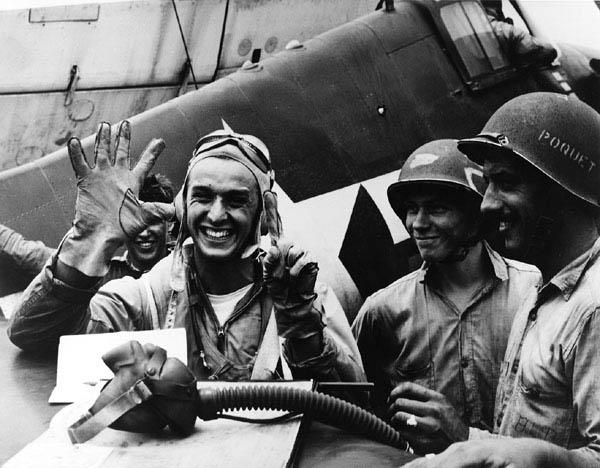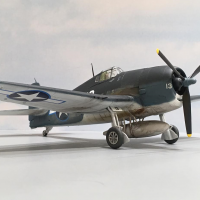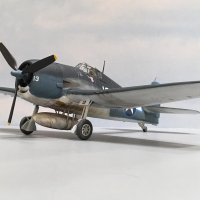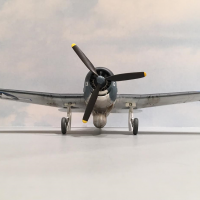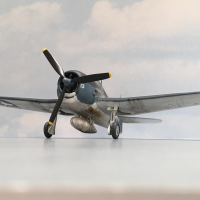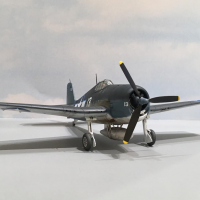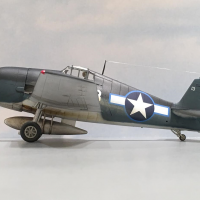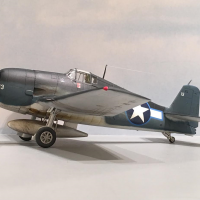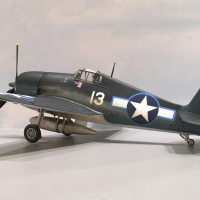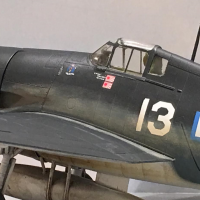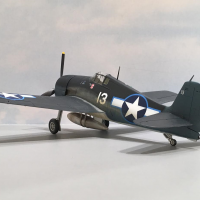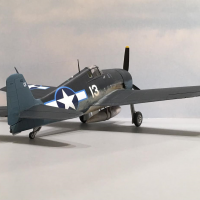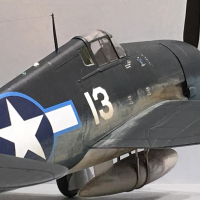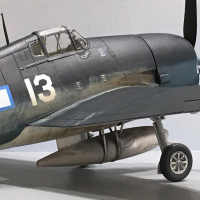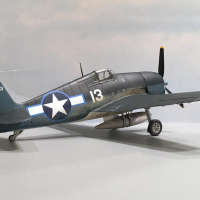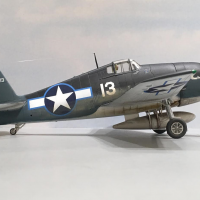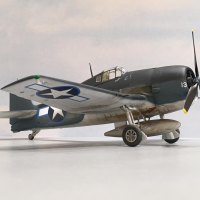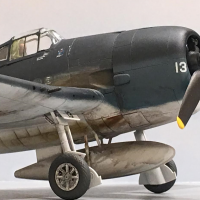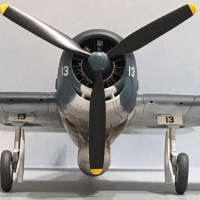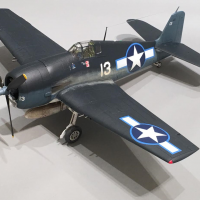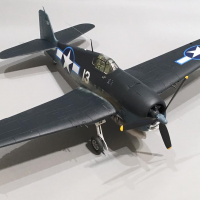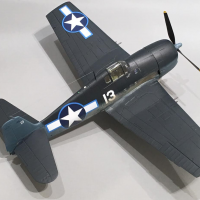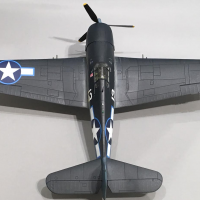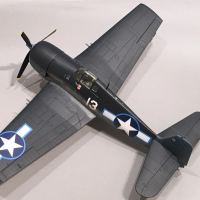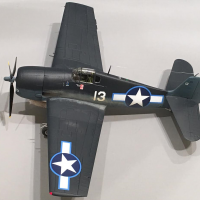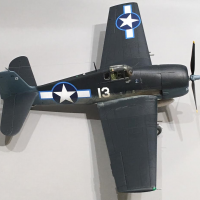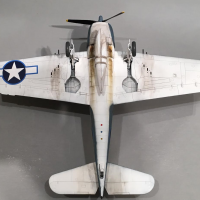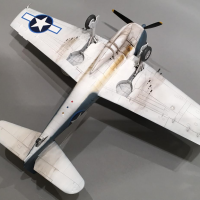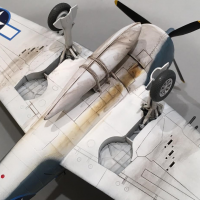1/48 Hasegawa F6F-3 Hellcat, The Great Mariana’s “Turkey Shoot” Lt. Arthur “Payne” Whiteway, VF-16 “Fighting Airedales” USS Lexington
Today and tomorrow marks the 73rd Anniversary of the Mariana's "Turkey Shoot", which happened on June 19th and 20th, 1944. It is sometimes called the battle of the Philippine Sea, where the Japanese lost an estimated 550 - 645 aircraft, 3 more "Fleet" Aircraft Carriers and nearly 3,000 men .
To quote "Wikipedia" directly, this is how the event got it's name...
During a debriefing after the first two air battles a pilot from USS Lexington remarked "Why, hell, it was just like an old-time turkey shoot down home!", referring to how the Japanese planes were shot from the sky.
About 8 years ago or so, when I was still working as a Fire Fighter for a local municipality, I just happened to run into a former pilot who was there during this "Turkey Shoot". It's often funny how in life you can cross paths with people...
His name was Arthur "Payne" Whiteway, and here's a photo of him sitting in the cockpit of an F6F Hellcat while he was flying with VF-16 from the USS Lexington.
On this particular night, we had responded to a fire alarm sounding at a 4 story tall apartment complex, that was at this time mainly inhabited by elderly persons. This can be a dangerous situation, with the possibility of large loss of life due to the fact that the elderly are sometimes bed ridden or have problems moving around. As a Company Officer I was the highest ranking person on scene during the first 15 minutes or so.
Having responded to numerous calls like this over the years of my career, I was thinking about what could go wrong and what to mentally prepare for "just in case". I never let my guard down on any call that I responded to during my firefighting career, because you just never know...
When our Fire Engine arrived first on scene, I reported a slight amount of smoke coming from one of the first floor exit doors. There were a lot of people that had already evacuated the building. The alarm systems visible warning strobe lights were flashing, and the alarm system was audibly sounding. I established command, and set aside a place for our ladder truck to come and set up its ladder which would raise to 75 feet to get ready for possible ladder rescues. I also had a place set aside for the rescue truck company and numerous EVAC ambulances. Meanwhile I picked a person to start gathering all of the occupants that had exited the building and have them report to a safer location nearby.
Needless to say, I was a very busy man with a lot on my mind at the time...
Then I met "Payne" as his friends called him.
He was walking near the entrance door, and wearing a US Navy baseball style cap that had the words "USS Lexington VF-16, Hellcat Pilot" embroidered on it. I looked at him and gave him a thumbs up, followed by a smart military style hand salute and told him "Thank you Sir for your service. I'm a big time WW2 aviation history buff". Payne smiled really big, returned my salute and told me that he would like to talk with me once this scene was wrapped up...
After we found the cause of the "smoke", which was actually powder from a dry chemical fire extinguisher, (someone had been playing in the hallway and discharged several in the hallway which set off the alarm), I said a prayer to myself thanking God that it was indeed not a fire. The dust from the dry chemical extinguishers looked like a light colored smoke at night...there was that much of it.
We ventilated the dust as best we could, marked off the affected hallway and turned the scene over to the local Police, since it's a crime in Florida to discharge an extinguisher like this.
After we started allowing residents back into the apartments, Payne found me and we had a short conversation. I pointed at his hat and grinned, then pointed at the name of the Apartments, which ironically was called "Lexington Place". Payne grinned back and said, "Yeah I know, I just can't seem to get away from anything named Lexington.", while pointing at his hat.
I asked him when did he serve on board the "Lex", and he told me that he flew from the Lexington from around mid 1943 to shortly after June of 1944 while serving with VF-16 the "Fighting Airedales", but added that he remained in the Navy until the War ended. Payne then told me that he would be moving out of the apartments at the end of the month, since his children were worried about him. I told him that if I could I would love to meet with him again and we could talk about airplanes when I had more time. He said that would be fine. I asked Payne if he flew with Alex Vraciu and he said yes, many times and that he knew him very well.
About that time we got another emergency call and had to leave...
He had a love for the Hellcat. You could tell it by the way he talked about the plane. Payne was the kind of person that you felt like you knew for years, even after just meeting him for the first time. He was a very kind man.
Sadly I never made it back to visit him again. Things always got in the way or something would happen that didn't allow me to do it. About two years ago I tried to look him up and visit him after I retired from the Fire Department.
Unfortunately he had passed away about a year earlier...so I never got to have that talk with my friend.
Every since then I have always wanted to build a model to represent one of the F6F-3 Hellcats that he may have flown. In his obituary, they stated that Payne flew a Hellcat numbered "13", so I started my research on VF-16.
and promptly found this photo...
which shows a VF-16 Hellcat number 13 that had crash landed on the Lexington. The caption stated that ENS Ed "Wendy" Windorf was the pilot at the time of this crash, and that he had been wounded. This was his first combat flight and the crash occurred on December 4th, 1943. This was during the time when Payne was onboard the "Lex".
This is a picture of "Wendy" Windorf sporting a bandage above his left eye, a day or so after the crash landing. He scored two kills and was wounded on his first mission. He crash landed old number 13 because blood from his head injury (caused by a Japanese bullet), was flowing into his left eye. He later said that a "carrier landing is hard enough when you have two good eyes, and is much more difficult when you only have one !".
Then I pulled out my book on the Hellcat by Steve Ginter, which is an excellent source of information...
and also used my "Blue Devils" book by Barret Tillman where I found some more neat information about VF-16. This is another "must have" book...
I was really stoked now, and started scrounging the internet for more VF-16 photos.
That's when I found this really cool color picture showing Lt. Commander Paul Buie (who was the VF-16 CO) along with some pilots from VF-16. This picture was taken just after the November 23rd raid ...
The pilots and caption from the photo are listed as follows from left to right in this photo below:
"Pilots pleased over their victory during the Marshall Islands attack aboard USS Lexington (CV-16), after shooting down 17 out of 20 Japanese planes heading for Tarawa. November 1943. Photographed by CDR Edward Steichen, USNR.
They are (l-r): ENS WM. J. Seyfferle, LT(JG) A. R. Fizalkowski, LT(JG) A. L. Frendberg, LCDR Paul D. Buie (Commanding Officer), ENS John W. Bartol, LT(JG) Dean D. Whitmore, LT(JG) Francis M. Fleming, LT(JG) WM. C. B. Birkholm, LT(JG) Sven Rolfsen, Jr. plus two others not named in group to right of LCDR Buie. Planes are F6F-3 Hellcats."
This is an AMAZING photo shown below, where it records my friend Payne after he scored his FIRST kill, which was reported as an A6M Zero... All of these VF-16 pilots scored on this day: November 23rd, 1943. A total of 17 confirmed kills were made by these VF-16 pilots on this day. Some of the pilots in this black and white photo are also in the color picture shown above.
Commander Buie is the tallest man in the picture, 3rd from the left, and Payne is the 5th man from the left, almost in the middle of this picture. These are pilots who scored kills on November 23rd.
Here's the caption from the photo:
"The day's tally for fighter pilots on Nov, 23 1943. Left to right: Ens. Ruckiske, Lt. (jg) Fleming, Lt. Com. Buie, Lt. (jg) Frendling, Lt. (jg) Whiteway, Lt (jg) Birkholm, Lt. (jg) Rogers, Lt. Kosciuski."
These pilots are all holding fingers up representing the number of planes they bagged that day in this photo below.
Now I was really in the search mode and just couldn't find enough stuff about VF-16. That's when I ran across these pictures:
A cool color photo shown below of the Lexington, CV-16
a color photo showing a F6F Hellcat landing on board the Lex...
Ground crew trying to clear a fouled deck with a disabled VF-16 F6F...
and a newspaper article about the time period...
along with the original picture from the archives:
I found out that VF-16 tried to assign pilots a particular plane, but that it wasn't always available for the assigned pilot to fly. So it was not uncommon for the pilots to be flying someone else's plane as required.
Then I found what could possibly be the "Holy Grail" of photos. It shows and F6F landing with the engine smoking in this picture below... and it's plane number #13... If you look closely at this one, you will see that the fuselage side number #13 is much larger as if it was repainted in a smaller size at a later date, (or the plane may have simply been replaced).
It came from the Ginter book on Hellcats, and it had another cool picture showing some VF-16 pilots walking out to their planes...(which Barrett Tillman used as the book cover / jacket for his book "Blue Devils").
This is the lower photo in this picture below.
Here's the caption for the picture:
So who really knows ? My friend "Payne" could have flown or been in some of these photos. I can guarantee that he would have recognized some of the faces in these pictures.
In February of 1944, a few months before the "Turkey Shoot" Alex Vraciu was assigned to VF-16. I also found this neat color photo showing planes on the deck of the Lexington, as seen below... This picture was taken in April 1944.
Here's a picture of Alex Vraciu just as he exited his plane on board the Lexington, on June 19th, 1944. He is smiling and holding up six fingers... He has just scored 6 aerial victories when he shot down 6 Yokosuka D4Y "Judy's". Vraciu downed these six planes in a matter of 8 minutes, and only used 360 rounds of .050 caliber ammunition... He was later awarded the Navy Cross for this action. This plane was suffering from a malfunctioning supercharger. It wouldn't go into "High Blower" settings, and failed to have the altitude and speed performance that it normally would have.
The very next day Vraciu downed an A6M Zero and became the US Navy's leading Ace. He held this distinction for the next several months.
If you look close, the plane he is standing next to has only a few kill markings just below the side of the cockpit on the Starboard side. Is this plane number 13 ? I really don't know for sure... but I do know that it is from the Group that Payne flew with that day.
Then I found out that Payne had to land on the USS Cabot on the night of June 20th, 1944 (The Mission after darkness) after his Hellcat was almost out of fuel. Admiral Mitscher, Commander of TF-58, had sent out another aerial attack, whose objective was to find and destroy the remaining Japanese Carriers, even though they would be flying at the end of their range, and darkness was falling...
The USS Lexington was the Task Force 58 flagship.
Payne was about to ditch his plane, when he noticed the spot lights were turned on a ship. So he flew toward the lights... then noticed another light , and another... He followed the lights until he came across the US Aircraft Carrier USS Cabot CVL-28.
He landed there on the Cabot with a few gallons of fuel left...after he had scored another Zero kill.
Armed with this newly found information, I began my build as a tribute to my friend.
Here's a link to his obituary where they refer to him shooting down another A6M Zero during the Mariana's "Turkey Shoot" and how his F6F was number #13.
http://www.tributes.com/obituary/show/Arthur-Payne-Whiteway-100673271
Please follow the link. There's a lot more information there about his life and family. I wish I would have had the opportunity to speak with him as originally planned, looked at some photos and possibly even his log book. I'm sorry that I missed out on this opportunity. A word of wisdom. These men are like National Treasures. They are not going to be around for much longer. So if you have a friend, or know someone who is a veteran and can spend some time with them, please do so. You both will be much happier afterwards.
So with that, here's my version of "Payne's F6F Hellcat", sporting two kill markings.
I hope you enjoy it.
The model itself is a Hasegawa 1/48 kit, and was a joy to build. It went together without any problems. The paints used were Model Master enamels.
I had a build log of the model here on Imodeler. Here's the link for the build thread:
http://imodeler.com/groups/work-in-progress-aircraft/forum/topic/148-hasegawa-f6f-3-hellcat-vf-16/
As usual, comments are encouraged.
Take care.
